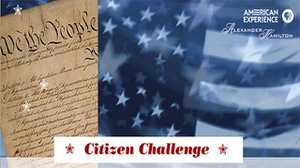Establishing a National Bank
One of the most important of Alexander Hamilton's many contributions to the emerging American economy was his successful advocacy for the creation of a national bank. But the Bank of the United States, like many of Hamilton's other projects, would generate controversy.

Financial Footing for a New Nation
Hamilton had long believed in the need for banks to provide credit and stimulate the economy. As early as 1780, he wrote a letter describing central banks in Europe and wondered, "And why cannot we have an American bank?" Hamilton helped found the Bank of New York in 1784. Soon after he became the nation's first Treasury Secretary, he was already proposing a national equivalent. On December 15, 1790, Hamilton submitted a report to Congress making the case. He proposed a Bank of the United States with a $10 million capital (then five times more than all other American banks combined) and the ability to issue paper money. It would be based in Philadelphia and chartered for 20 years. The federal government would have a minority stake in the Bank, but its board of directors would be private individuals, thus ensuring a mix of public oversight and private enterprise. The Bank would be able to lend the government money and safely hold its deposits, give Americans a uniform currency, and promote business and industry by extending credit. Together with Hamilton's other financial programs, it would help place the United States on an equal financial footing with the nations of Europe.
Southern Opposition
In contrast to Hamilton's plan for the federal government to assume state debts, Hamilton's bank plan had a relatively easy time in Congress. The Senate passed it handily on January 20, 1791, and the House followed in early February. But support for the Bank fell largely along sectional lines, with Northern endorsement and Southern opposition. Among those Southern opponents was James Madison, who worried that the Bank's placement in Philadelphia, the nation's temporary capital, might thwart the decision to put the permanent seat of government further south on the banks of the Potomac River. Madison also noted that the Constitution conferred no power to establish a national bank or any other corporation; and if a power was not in the text, by what authority could it be done? When the Bank bill reached George Washington, Thomas Jefferson, who termed the banking industry "an infinity of successive felonious larcenies," also weighed in against it on constitutional grounds, urging a veto. So did Attorney General Edmund Randolph. It seemed as if the Bank might yet go down to defeat.
Convincing Washington
Hamilton would not give up without a fight. Asked by his patron Washington to answer the opinions of Jefferson and Randolph, Hamilton swiftly penned an opinion of almost 15,000 words presenting his case. Hamilton's central point was that the Constitution must confer implied powers along with those actually enumerated; the vehicle for this was the clause enabling Congress "to make all laws which shall be necessary and proper" to put expressly granted powers into effect. In Hamilton's view, later echoed by Chief Justice John Marshall in the landmark McCulloch v. Maryland case upholding the Bank's constitutionality, "necessary" did not mean absolutely essential so much as useful and appropriate, and the Bank certainly met that looser standard -- it would be a great help in enabling the government to carry out a number of powers explicitly granted it by the Constitution, including collecting taxes, regulating trade and creating a military. Persuaded by Hamilton's arguments, on February 25 Washington signed the Bank bill into law.
Expired Charters
When stock in the Bank became publicly available in July 1791, the resulting frenzy and rocketing share price seemed to confirm its value. But criticism of Hamilton's policies and the man himself was growing, and the Bank was a key factor in the creation of America's first organized opposition party, the Republicans, that same year. Republican capture of the White House in 1800 and continued control did not bode well for the Bank, and when its first charter expired in 1811, the Senate rejected a bid to renew it. President Madison felt the consequences during the War of 1812, when there was no central bank to fund the military effort, and as a result he endorsed renewal in 1816. But the charter of this Second Bank of the United States expired under President Andrew Jackson, another Bank foe, and Jackson let it lapse. In a curious irony, Jackson's acting secretary of state, James Alexander Hamilton, opposed the very Bank his father had created. And this time there would be no quick renewal; although Congress allowed certain nationally charted banks during the Civil War, the modern Federal Reserve system did not come into being until 1914.







